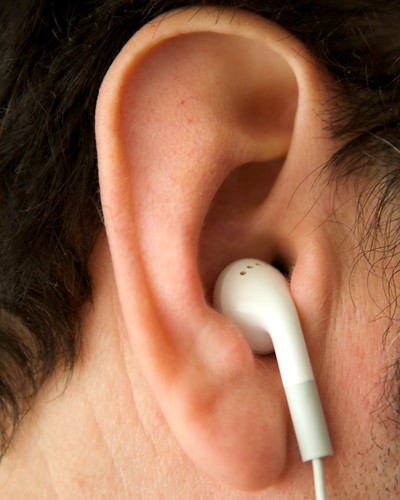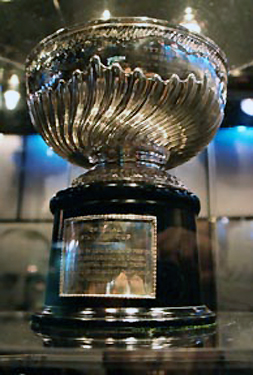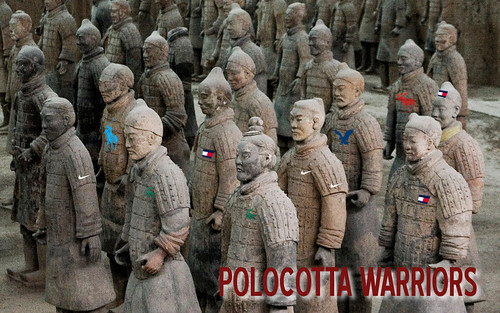
A reflection on how the distraction stories that media lumped on the public in the 19th century were so much more interesting than now. Brought to us by the fine folks at newspapers.bl.uk.
For those of you who have have seen Kenneth Branagh in other films like this year's Valkyrie, his first major film triumph was 20 years ago when, at age 29, he directed and starred in Henry V. Perhaps the most memorable scene from that film was done in a four minute long shot of the bloodied battlefield after the vastly outnumbered English defeated the French (it was Shakespeare after all).
With the strains of the hymn "Non nobis domine" echoing from beginning to end, the planning and execution of such a long tracking shot was incredible. Watch it once to see the main action, and then watch it again to look at everything going on in the background that you didn't see the first time.
This shot, in my mind, rivals the Goodfellas shot of Henry Hill's first date in terms of uncut brilliance in direction and execution.

There is nothing so special in society as the charismatic orator. For entertainment and education value, the orator can stand on the stage, on the soapbox, behind the mic, in front of the camera, and reach out to one mind or a million. The content appeal and most often the appeal of the orator is completely subjective, yet the quality of certain individuals isn't lost on masses.
The practice has melded from the ancient to the cutting edge. From Greeks standing in front assembled crowds to podcasts that receive tens of thousands of downloads a day, the orator has moved from the floors of democracy to the warm glow of an LCD screen. And in so much I enjoy podcasts of people interacting, discussing and dialoguing, I hold a fond affinity for the monologue, the rant, and the introspective narrative. From Garrison Keillor to Henry Rollins, from Stuart Mclean to Jello Biafra, from MLK to Bill Hicks, from John Kennedy to Lenny Bruce, the orator has developed and ex panded to suit the needs of audiences and the conventions of the times. (And I'll take the heat here for not including any female examples - my only excuse is for populist impact and general ignorance of comparable pop culture examples, which is a more of a social tragedy than an excuse.)
That the orators of today can hide in a basement behind a microphone may bastardize the centuries-old traditions of standing in front of a crowd and bellowing to assembled throngs, but the intents have not changed: inspire, motivate, educate, even manipulate. Orators try to inspire confidence with confidence, encourage fun by having fun, and move to action by using words as tools - and sometimes weapons.
While some would complain that oratory is a lost art, I often think that, instead, the audiences have lost oratory. For hundreds of millions of people oratory has been reduced to places of public worship - the preacher at the pulpit. The orator used to represent the closest thing to mass media that existed during a place and time. Our attentions have been drawn to flash and pomp and circumstance, yet there's nothing quite the same as a live venue with a passionate speaker, a message, and a desire to communicate. If the ability to experience a charismatic orator live has waned from our consciousness, perhaps some of us have turned to modern substitutes.
I'll be the first to admit that the crowd atmosphere, facial contortions, body language and electricity is difficult, near impossible, to reproduce over a microphone, but remains, noenetheless, enjoyable. Our minds have a boundless ability to fill the voids left without the live experience. The podcaster also has a great strength that is borne on a huge disadvantage. Let's face it; there's little social inhibition in not downloading or stopping and walking away from listening to a podcast. The buy-in on behalf of podcast listeners ensures their engagement and should encourage the content creators. While millions of people sit solemn in houses of worship, there is a stigma involved in getting up and walking out on a sermon.
The faceless orator of portable media devices is not so much the Big Brother or Supreme Sister of the future, but instead a voice of choice, an expert in semantic antics, expressing luminosity in verbosity... and the Earbud Orator shall reign forever... or at least until something cooler comes along... like holodecks.


We all take logos and design for granted and, quite frankly, I think we should. What I mean is that a logo should be like a referee in a hockey game, you know their doing their best when you don't even notice they're around.
By clicking the link under the picture above you'll be able to see the evolution of some 40 different corporate logos. I find SONY one of the most interesting merely because of their decided lack of major change over the past century. Almost all of the change in the SONY logo revolves around either slight squashing or elongation of the standard font. The great thing is that you know there's probably months of debate going into every proportional change to that font. The intense considerations that often go into the most miniscule tweaks to a logo makes them one of the ultimate forms of craft.
Know your audience and represent your entire brand in a scalable symbol that can be reproduced from one inch wide to a billboard.
I never thought I'd be podcasting about hockey, but next to the other six seasons: Winter, Spring, Construction, Summer, Fall, and TV Premiere, NHL Playoff Season is right up there in prompting a two month anticipation of great televised sports.
In as much as I believe that any product of a culture can help to define at least one piece of the culture that spawned it, hockey helps to define the entire Canadian culture for the past century.

In as much as I have trouble staying concise (especially when I get on a roll) the ability of a person or organization to convey a story or message in a short period of time is admirable. It is a skill that especially becomes necessary when acknowledging that learning skills are diversifying to include "snippet education".
I can't complain. Most of my knowledge of US History (being a Canadian) came from three minute Schoolhouse Rocks cartoons sandwiched in between the Superfriends and Laff-a-lympics. I suppose that's where I also got my basic knowledge of Parts of Speech, because Verb is What's Happenin'.
I do not think, however, that either extreme of learning can be sacrificed totally for the purposes of today's educators. The one-minute long Amnesty International video showing the different faces and horrors of war over the centuries is a fine example of making an impact in a short period of time. But, as much as we might like to believe this is learning in a minute, the process of comprehension and analysis takes us far beyond what could be termed "snippet education".
The descriptor "snippet", which I like to join to not only education, but journalism as well, doesn't really speak to a full education process in as much as an introduction of a concept. But that is really what the web is turning into, brief (sometimes very brief) introductions of concepts. The Twitter link referral often doesn't even introduce a concept so much as provide an advocacy gateway for the link itself. The greatest use of "snippet education" can be derived from elective learners, i.e. people who get to pick what they want to learn next. Quite frankly, if someone doesn't want to learn history or grammar or multiplication tables, even one minute is too long.
So while there is a constant push to integrate web2.0 and like technologies into modern education, there is often an inconsistency between the methodology and the pedagogy. The web has become the great repository of elective learning and, for that purpose, is unequaled in scope and accessibility. While education advocates have been clamoring for free education for years, the web can provide a great tool for self-instruction and free learning. The web and its like technologies are not, however, the be all end all of formalized education.
Multimedia can be great, but can also cloud a concept. As much as students are more likely to think an impactful snippet is cool or memorable, such an impact is shallow. The deep learning starts to arrive through discourse and discussion, which, on an individual level, could be facilitated by the web, but on a real life level is much better achieved through face-to-face interaction.
Someday all public schools will be able to afford the tools which will allow these methods to be meshed together seamlessly, but one or two computer labs doesn't cut it. Until then, a thousand shallow dents of knowledge is probably better than tabula rasa, but one or two deep wells of knowledge is probably preferred in the long run.

